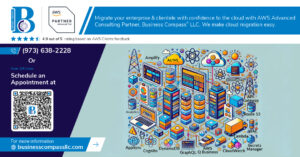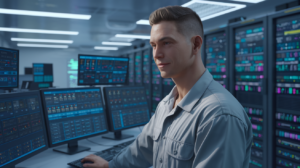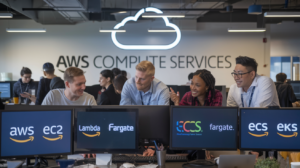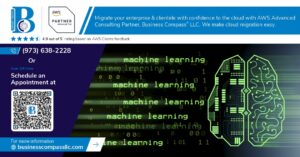In the realm of artificial intelligence, a groundbreaking concept is emerging that promises to revolutionize the way machines learn and adapt: Self-evolving AI. This cutting-edge technology represents a quantum leap in AI capabilities, enabling systems to continuously improve and refine their own algorithms without human intervention. 🤖💡
As the digital landscape rapidly evolves, traditional AI models are struggling to keep pace with the ever-changing demands of our interconnected world. Self-evolving AI offers a tantalizing solution to this challenge, presenting a future where machines can autonomously enhance their performance, tackle complex problems, and even venture into uncharted territories of knowledge. But what exactly is self-evolving AI, and how does it work? What potential applications and advantages does it hold, and what obstacles must be overcome for its widespread adoption?
This blog post will delve into the fascinating world of self-evolving AI, exploring its underlying science, real-world applications, and the profound impact it could have on various industries. From understanding the core principles to examining the challenges and future prospects, readers will gain valuable insights into this transformative technology that stands poised to reshape the AI landscape.
Understanding Self-evolving AI

A. Definition and core concepts
Self-evolving AI refers to artificial intelligence systems capable of autonomously improving their performance and capabilities over time without explicit human intervention. These systems leverage advanced machine learning techniques to adapt, optimize, and enhance their own algorithms and models.
Key concepts of self-evolving AI include:
- Continuous learning
- Adaptive algorithms
- Autonomous optimization
- Self-modification
- Emergent intelligence
B. How it differs from traditional AI
Self-evolving AI distinguishes itself from traditional AI in several ways:
| Aspect | Traditional AI | Self-evolving AI |
|---|---|---|
| Learning | Static, predefined | Continuous, adaptive |
| Performance | Limited by initial design | Improves over time |
| Adaptability | Requires manual updates | Autonomously adapts |
| Scope | Narrow, task-specific | Potential for broader capabilities |
| Human involvement | Ongoing maintenance | Minimal intervention |
C. Key components of self-evolving systems
Self-evolving AI systems comprise several essential components:
- Meta-learning algorithms
- Automated feature engineering
- Dynamic neural architecture search
- Self-monitoring and evaluation mechanisms
- Knowledge transfer capabilities
These components work in tandem to enable AI systems to evolve and improve autonomously. By continuously analyzing their own performance and exploring new strategies, self-evolving AI systems can adapt to changing environments and tackle increasingly complex challenges.
The Science Behind Self-evolution in AI

Machine learning algorithms
Machine learning algorithms form the foundation of self-evolving AI systems. These algorithms enable AI to learn from data, adapt to new information, and improve performance over time without explicit programming. Key types of machine learning algorithms used in self-evolving AI include:
- Supervised learning
- Unsupervised learning
- Semi-supervised learning
- Reinforcement learning
Each type plays a crucial role in enabling AI systems to evolve and improve autonomously.
Neural networks and deep learning
Neural networks, particularly deep learning architectures, are essential components of self-evolving AI. These structures mimic the human brain’s neural connections, allowing AI systems to process complex data and learn intricate patterns. Deep learning enables:
- Hierarchical feature extraction
- Automated feature engineering
- Transfer learning capabilities
- Continuous adaptation to new data
| Layer Type | Function |
|---|---|
| Input Layer | Receives raw data |
| Hidden Layers | Process and transform data |
| Output Layer | Produces final predictions |
Genetic algorithms and evolutionary computation
Genetic algorithms and evolutionary computation techniques draw inspiration from biological evolution to optimize AI systems. These methods involve:
- Creating a population of potential solutions
- Evaluating fitness based on performance
- Selecting the best-performing solutions
- Applying genetic operators (crossover and mutation)
- Repeating the process to evolve better solutions
This approach allows AI systems to explore diverse solution spaces and adapt to changing environments efficiently.
Reinforcement learning
Reinforcement learning enables AI agents to learn optimal behaviors through interaction with their environment. This paradigm is crucial for self-evolving AI as it allows systems to:
- Explore and exploit different strategies
- Learn from trial and error
- Optimize decision-making processes
- Adapt to dynamic environments
By combining these scientific approaches, self-evolving AI systems can continuously improve their performance, adapt to new challenges, and push the boundaries of artificial intelligence capabilities.
Applications of Self-evolving AI

A. Robotics and autonomous systems
Self-evolving AI has revolutionized the field of robotics and autonomous systems, enabling machines to adapt and improve their performance in real-time. These systems can:
- Learn from their environment
- Optimize their decision-making processes
- Enhance their capabilities over time
| Application | Benefits |
|---|---|
| Industrial robots | Increased efficiency, reduced errors |
| Autonomous vehicles | Improved navigation, enhanced safety |
| Drones | Better obstacle avoidance, optimized flight paths |
B. Healthcare and medical diagnosis
In healthcare, self-evolving AI has shown remarkable potential in improving diagnostic accuracy and treatment planning. Key applications include:
- Analyzing medical imaging data
- Predicting disease progression
- Personalizing treatment plans
C. Financial forecasting and trading
Self-evolving AI algorithms have transformed financial markets by:
- Adapting to market fluctuations in real-time
- Identifying complex patterns in financial data
- Optimizing trading strategies autonomously
This has led to more accurate predictions and improved risk management in the financial sector.
D. Personalized recommendations
Self-evolving AI has significantly enhanced personalized recommendation systems across various industries:
- E-commerce: Tailoring product suggestions based on user behavior
- Entertainment: Curating content recommendations for streaming platforms
- Education: Adapting learning materials to individual student needs
E. Smart cities and IoT
In the realm of smart cities and Internet of Things (IoT), self-evolving AI is driving innovation by:
- Optimizing traffic flow and reducing congestion
- Improving energy management in buildings
- Enhancing public safety through intelligent surveillance systems
These applications demonstrate the versatility and transformative potential of self-evolving AI across diverse sectors. As we explore further, we’ll examine the advantages that make this technology so promising for future advancements.
Advantages of Self-evolving AI

Continuous improvement without human intervention
Self-evolving AI systems demonstrate remarkable capabilities for continuous improvement without the need for constant human oversight. These systems can:
- Analyze their own performance
- Identify areas for improvement
- Implement necessary changes autonomously
This autonomous learning process leads to:
- Faster optimization
- Reduced human error
- Increased efficiency
Adaptability to changing environments
One of the key advantages of self-evolving AI is its ability to adapt to dynamic environments. This adaptability manifests in:
| Feature | Benefit |
|---|---|
| Real-time learning | Immediate response to new situations |
| Flexible decision-making | Improved outcomes in unpredictable scenarios |
| Contextual understanding | Enhanced performance across various domains |
Enhanced problem-solving capabilities
Self-evolving AI systems exhibit superior problem-solving skills compared to traditional AI models. They can:
- Generate novel solutions to complex problems
- Refine strategies based on past experiences
- Combine diverse knowledge domains for innovative approaches
Reduced maintenance and update costs
By continuously evolving and improving themselves, self-evolving AI systems significantly reduce the need for manual updates and maintenance. This results in:
- Lower operational costs
- Decreased downtime
- Improved resource allocation
These systems can identify and address potential issues before they become critical, ensuring optimal performance and longevity. As AI technology continues to advance, the potential for self-evolving systems to revolutionize various industries becomes increasingly evident.
Challenges and Limitations

Ethical concerns and decision-making transparency
Self-evolving AI systems raise significant ethical concerns, particularly regarding their decision-making processes. As these systems become more complex, the transparency of their actions becomes increasingly opaque. This lack of explainability poses challenges for:
- Accountability
- Trust-building
- Regulatory compliance
To address these issues, researchers are developing methods for:
- Interpretable AI models
- Ethical frameworks for AI decision-making
- Auditing tools for AI systems
Control and safety issues
The autonomous nature of self-evolving AI presents unique control and safety challenges:
| Challenge | Potential Consequence |
|---|---|
| Unintended behaviors | System actions misaligned with human values |
| Rapid evolution | Difficulty in predicting system capabilities |
| Goal misalignment | AI pursuing objectives harmful to humans |
To mitigate these risks, researchers are focusing on:
- Robust AI alignment techniques
- Fail-safe mechanisms
- Continuous monitoring and intervention protocols
Computational resources and energy consumption
Self-evolving AI systems require substantial computational power and energy resources. This presents challenges in terms of:
- Scalability
- Environmental impact
- Cost-effectiveness
Researchers are exploring solutions such as:
- Efficient algorithm design
- Green computing technologies
- Distributed computing architectures
Integration with existing systems
Integrating self-evolving AI with legacy systems and infrastructure poses significant challenges:
- Compatibility issues
- Data interoperability
- Performance bottlenecks
To address these challenges, organizations are adopting:
- Modular AI architectures
- API-driven integration approaches
- Hybrid cloud solutions
As self-evolving AI continues to advance, addressing these challenges will be crucial for realizing its full potential while ensuring responsible and sustainable development.
Future Prospects of Self-evolving AI

Potential breakthroughs in AI capabilities
Self-evolving AI is poised to revolutionize the field of artificial intelligence, potentially leading to unprecedented breakthroughs. Some of the most promising areas include:
- Autonomous problem-solving
- Real-time language adaptation
- Self-optimizing neural networks
- Emergent cognitive abilities
These advancements could result in AI systems that not only learn from experience but also innovate and create novel solutions independently.
Impact on various industries
The integration of self-evolving AI is expected to transform multiple sectors:
| Industry | Potential Impact |
|---|---|
| Healthcare | Personalized treatment plans, advanced diagnostics |
| Finance | Adaptive risk assessment, real-time market analysis |
| Manufacturing | Self-optimizing production lines, predictive maintenance |
| Education | Tailored learning experiences, adaptive curricula |
As self-evolving AI systems become more sophisticated, they will likely drive efficiency, innovation, and productivity across these industries and beyond.
Collaboration between humans and self-evolving AI
The future of AI will likely involve a symbiotic relationship between humans and self-evolving systems. This collaboration could manifest in several ways:
- AI as cognitive enhancers, augmenting human decision-making
- Human-AI teams tackling complex global challenges
- AI systems learning from human creativity and intuition
- Humans guiding AI ethical development and goal-setting
This partnership has the potential to unlock new realms of possibility, combining the strengths of human ingenuity with the computational power and adaptability of self-evolving AI.

Self-evolving AI represents a groundbreaking frontier in artificial intelligence, pushing the boundaries of machine learning and autonomous systems. This technology enables AI systems to adapt, improve, and evolve their capabilities without human intervention, opening up new possibilities across various industries and applications. From enhancing decision-making processes to optimizing complex systems, self-evolving AI has the potential to revolutionize fields such as healthcare, finance, and manufacturing.
As the development of self-evolving AI continues to progress, it is crucial to address the challenges and ethical considerations associated with this technology. By carefully navigating the limitations and potential risks, researchers and developers can harness the full potential of self-evolving AI while ensuring its responsible and beneficial implementation. The future of self-evolving AI holds immense promise, and its continued advancement will likely shape the landscape of artificial intelligence and its impact on society for years to come.




















